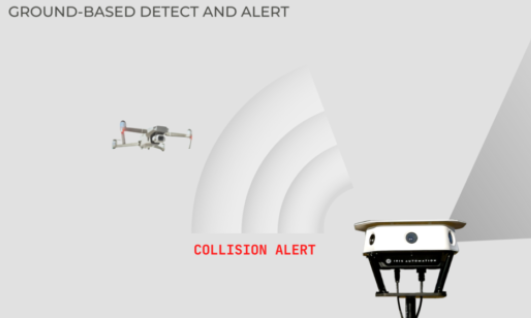Drone service provider, Flying Lion, and safety avionics technology company, Iris Automation have entered into a new partnership to provide Drone as First Responder (DFR) programmes with enhanced airspace awareness. This partnership will see the addition of Iris Automation’s Casia G ground-based detect and alert system to the Flying Lion suite of services, according to a joint press release.
In order to comply with current FAA requirements, Flying Lion and these DFR programmes have been utilizing human remote pilots in command (RPICs) and visual observers (VOs) to allow for BVLOS operations in their cities. While this has been necessary to comply with FAA certificate of authorizations (COAs) for these agencies, it is not optimal for ongoing or large-scale DFR operations. DFR programs enable the immediate dispatch of a drone in response to a 911 call for the purpose of real-time aerial situational awareness, in advance of, and to support ground units to enhance community and first responder safety.
With the implementation of Casia G, the next generation of DFR programs will have the capability to create a volume of surveilled airspace to conduct drone operations without the need for human visual observers. Casia G is a small, passive, low-power, weather-hardened device that can be installed anywhere there is a clear view of the sky. This can be a rooftop, street light pole, cellular tower, or other vertical structure. Casia G detects cooperative aircraft using ADS-B and non-cooperative aircraft using Iris’ patented computer vision and artificial intelligence software. Once an aircraft is detected, two concepts of operation are possible:
- Casia G alerts the Remote Pilot in Command (RPIC), providing the classification and location of the detected aircraft. The RPIC then initiates an avoidance maneouver and resumes the mission once the detected aircraft is clear of the operational area.
- Casia G sends an automated collision alert to the uncrewed aerial system’s command software, resulting in the system automatically executing a pre-programmed avoidance maneuver.
Multiple Casia G nodes can be deployed to cover any operational area, enabling drones to cover an entire municipality. DFR program managers can then enjoy BVLOS operations of multiple UAS from multiple launch points, enabling minimum response time. In addition, the ability to fly routine BVLOS missions enables the centralized management and operations of the UAS, and integration into 911 dispatch and real-time crime center operations. There are more than 18,000 municipal police departments in the USA, and only 200 of them have access to an aerial asset. BVLOS operation of drones enables the remaining 17,800 departments to not only have access to an aerial asset, but within existing budget constraints – relieving pressure on the human capital in police operations.
For more information visit:




